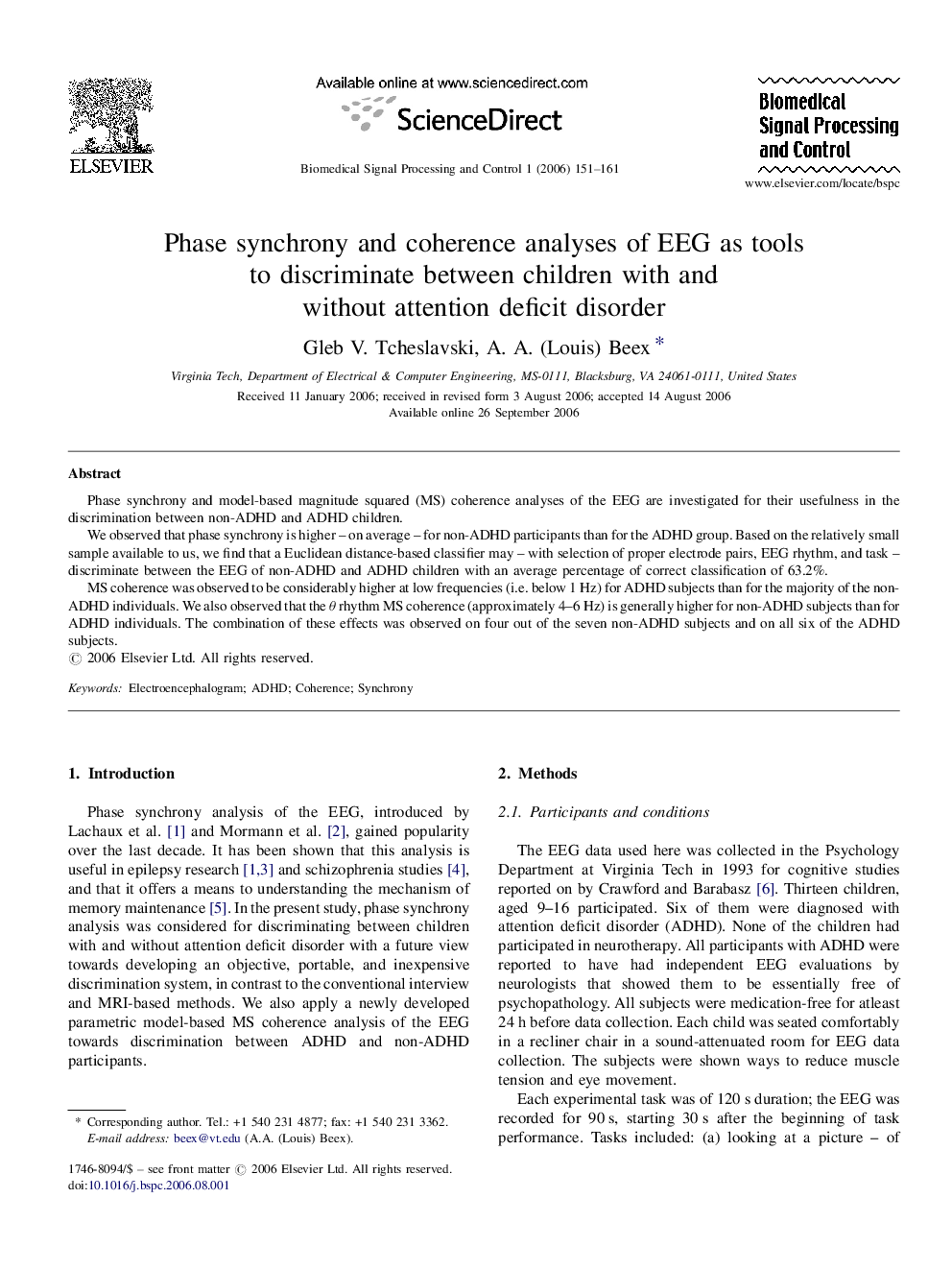| کد مقاله | کد نشریه | سال انتشار | مقاله انگلیسی | نسخه تمام متن |
|---|---|---|---|---|
| 562848 | 875452 | 2006 | 11 صفحه PDF | دانلود رایگان |

Phase synchrony and model-based magnitude squared (MS) coherence analyses of the EEG are investigated for their usefulness in the discrimination between non-ADHD and ADHD children.We observed that phase synchrony is higher – on average – for non-ADHD participants than for the ADHD group. Based on the relatively small sample available to us, we find that a Euclidean distance-based classifier may – with selection of proper electrode pairs, EEG rhythm, and task – discriminate between the EEG of non-ADHD and ADHD children with an average percentage of correct classification of 63.2%.MS coherence was observed to be considerably higher at low frequencies (i.e. below 1 Hz) for ADHD subjects than for the majority of the non-ADHD individuals. We also observed that the θ rhythm MS coherence (approximately 4–6 Hz) is generally higher for non-ADHD subjects than for ADHD individuals. The combination of these effects was observed on four out of the seven non-ADHD subjects and on all six of the ADHD subjects.
Journal: Biomedical Signal Processing and Control - Volume 1, Issue 2, April 2006, Pages 151–161